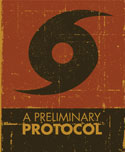National interest in energy conservation and efficiency is skyrocketing, and national policies and initiatives are following. For example, the International Code Council's International Energy Conservation Code and ASHRAE 90.1-2013, "Energy Standard for Buildings Except Low-Rise Residential Buildings," seek significant increases in energy savings in residential and commercial buildings; The American Institute of Architects has pledged to have net zero energy buildings by 2030; and President Obama's Better Buildings Initiative calls for commercial buildings to be 20 percent more energy-efficient. The list goes on.
In response, roof system designers, roofing contractors and property owners are finding innovative ways to improve their buildings' energy performances and efficiencies. Many find insulation offers a critically important way to make any building—whether residential or commercial—more energy-efficient.
Measuring performance
The polyisocyanurate industry is taking strong action to improve the performance of its products and identify ways to accurately measure that enhanced performance. A crucial factor when choosing insulation, R-value measures insulation's resistance to heat flow. Architects, specifiers, building owners and roofing contractors expect R-values to accurately reflect insulation's long-term thermal resistance (LTTR).
To meet these expectations, polyisocyanurate insulation manufacturers have participated in and sponsored research projects to develop consensus laboratory methods to determine the LTTR of permeable-faced plastic insulating foams typically used as roof insulation. During the past decade, these methods have evolved into the most recent update to ASTM C1289, "Standard Specification for Faced Rigid Cellular Polyisocyanurate Thermal Insulation Board."
Test methods
Reaching the current test methods has been a long process. During the 1950s and early 1960s when the rigid polyurethane foam industry was young, manufacturers measured foam's thermal conductivity (k factor or k value) soon after the foam was manufactured. At that time, most foam was molded into cavities surfaced with thick metal or plastic and used in end products such as refrigerators. In these cases, there was little to no aging in the foam.
But the polyurethane foam industry rapidly advanced as foam became a critical insulation product for roofs and walls. In many cases, the insulating materials were used in such a way that it was difficult to cut and retain samples that would be representative of "aged" materials.
To provide transparency about the thermal value of rigid foam insulation, the Thermal Insulation Manufacturers Association's Roof Insulation Committee published a standard practice (RIC/TIMA 281-1) for manufacturers to follow when measuring k values or quoting R-values of finished products. Before measuring a closed-cell foam product's thermal performance, a manufacturer was directed to condition the product for 180 days at 75 F. Designers, contractors and the Federal Trade Commission validated this as an appropriate method. The value measured then could be advertised as the R-value after conditioning. Members of the Polyisocyanurate Insulation Manufacturers Association (PIMA) used this method—called PIMA 101—for many years.
In 2002, the polyisocyanurate industry transitioned to a new method for determining the thermal insulation efficiency of permeably faced products—LTTR. This represents the most advanced scientific method to measure LTTR of foam insulation products that use blowing agents.
What is LTTR?
Based on consensus standards in the U.S. and Canada, LTTR is a scientifically supported way to calculate the 15-year, time-weighted average R-value of roof insulation. In 2002, most polyisocyanurate manufacturers adopted the LTTR method as the exclusive means to measure thermal performance of permeable-faced polyisocyanurate roof insulation.
There are two test methods for calculating LTTR: ASTM C1303, "Standard Test Method for Predicting Long-Term Thermal Resistance of Closed-Cell Foam Insulation," and CAN/ULC S770, "Standard Test Method for Determination of Long-Term Thermal Resistance (LTTR) of Closed-Cell Thermal Insulating Foams."
Both test methods rely on a technique called "slicing and scaling." Thin slices of foam (between ¼ and ½ of an inch) are taken from insulation boards, and the slices' R-values are measured after a set time period. Because the slices are thin, the foam experiences accelerated aging and a design LTTR value can be determined.
The use of an LTTR value provides the following advantages compared with using values determined after an arbitrary fixed conditioning period:
- It provides a technically supported, more descriptive measure of polyisocyanurate insulation's LTTR.
- The thin slices are taken from current production insulation samples. Previous methods used samples that were at least 3 months old with some up to 6 months old.
- The process is much faster. Determining an LTTR value is fairly rapid and, depending on a slice's thickness, can produce an LTTR design value for a 2-inch-thick polyisocyanurate insulation board in about 90 days.
- A formula is used to determine the aging time period for a particular insulation thickness instead of using the same conditioning period for products of all thicknesses as was done in the past.
- It applies to all foam insulation with blowing agents other than air and provides a better understanding of foam's thermal performance.
ASTM C1303 is, in part, a result of a research project at the Oak Ridge National Laboratory in Oak Ridge, Tenn. The project was co-funded by the Environmental Protection Agency (EPA), Department of Energy, PIMA, NRCA and the Society of the Plastics Industry.
CAN/ULC S770 is the result of work in Canada. This method is based on the same thin-slicing and accelerated-aging concept as ASTM C1303, but it also accounts for the effect of permeable facings, or skins, on the LTTR of foam insulation in addition to a number of other factors. Considered to be a prescriptive way to perform ASTM C1303 (a more narrowly defined procedure within the bounds described in the ASTM standard), CAN/ULC S770 predicts what a foam's R-value will be after a five-year aging period.
ASTM C1289
ASTM C1289 first was published in 1998. The standard is a series of physical property tests, including the measure of insulation's LTTR, conducted to ensure a polyisocyanurate product's performance meets a minimum standard. These tests are an integral part of the continuing quality control performed by polyisocyanurate manufacturers. The standard is used to predict a foam's R-value equivalent to the average performance of a permeably faced foam insulation product during a time span of 15 years.
To provide a comprehensive approach to predicting long-term R-value throughout North America, the updated ASTM C1289-11 standard incorporates two test methods, ASTM C1303-11 and CAN/ULC-S770-09. Each method offers a similar approach to predicting the long-term thermal performance for foam insulation materials that exhibit air and blowing agent diffusion or aging over time.
As noted, both test methods employ a technique called "slicing and scaling" to accelerate the aging process and provide an accurate, consistent prediction of product R-value after five years—this is the equivalent of a time-weighted thermal design R-value for 15 years. Based on extensive research during the past five years, including bias and ruggedness testing, most researchers now agree ASTM C1303 and CAN/ULC–S770 provide similar and consistent results predictive of actual aged performance.
Certification programs
Manufacturers often seek a means to independently demonstrate the performance of their products to customers. There also are programs certifying building performance. Examples of well-known certification programs include EPA's ENERGY STAR® program and the U.S. Green Building Council's LEED® rating system.
Launched in 1992, ENERGY STAR is a voluntary program that helps businesses and individuals identify energy-efficient products and practices. Products can earn the ENERGY STAR label by meeting the energy-efficiency requirements set forth in ENERGY STAR product specifications.
LEED provides third-party verification that a building or community was designed and built to improve performance across a set of metrics: energy savings, water efficiency, carbon dioxide emissions reduction, improved indoor environmental quality, and stewardship of resources and sensitivity to their effects.
Building products manufacturers also are taking innovative steps to respond to the growing demand from architects, government procurement agencies and consumers for energy-efficient products and materials that meet specific environmental criteria. PIMA members were early adopters and in 2002 launched the PIMA QualityMarkCM certification program.
Designed and implemented by PIMA members, this voluntary program enables polyisocyanurate manufacturers to obtain third-party certification for the LTTR-values of the permeable-faced polyisocyanurate roof insulation they produce. QualityMark was the first program of its kind in the history of highly energy-efficient roof insulation and complements the LTTR testing method.
Any polyisocyanurate insulation manufacturer can participate in the program. Participating companies are required to include each of their manufacturing locations in the PIMA QualityMark program.
FM Global is the PIMA QualityMark administrator. FM Global, or another independent third-party selector, takes random polyisocyanurate insulation samples from each participating manufacturer's plant in accordance with the program's guidelines. An accredited testing laboratory then establishes and certifies the 15-year LTTR value using the ASTM International-approved LTTR standard. To ensure continued compliance with the stated LTTR values, each polyisocyanurate insulation plant must have a third-party quality-assurance program in place and is subject to unannounced value verification.
To participate in PIMA's QualityMark certification program, a Class 1 roof is suggested to have a design R-value of 5.7 per inch. PIMA members will publish updated R-values for their polyisocyanurate products later this year. The PIMA QualityMark program will begin reporting LTTR values in accordance with ASTM C1289-11 Jan. 1, 2014.
Life cycle assessment
Architects, specifiers, building owners and roofing contractors now are looking more closely at building products and increasingly incorporating an environmental performance-based life cycle concept into their decision-making processes. This includes looking at a product's life cycle assessment (LCA) and its environmental product declaration (EPD).
An LCA is a scientific methodology that evaluates the environmental impact of a product through its entire life cycle—from raw materials through processing, manufacturing, installation, use, and disposal or recycling. An EPD is a comprehensive report created by a manufacturer that documents the ways in which a product, throughout its life cycle, affects the environment.
As part of its ongoing efforts to promote environmental awareness and reporting transparency, PIMA has completed a comprehensive LCA of polyisocyanurate building insulation. This exhaustive effort was conducted in accordance with the framework and principles established in the International Organization for Standardization's ISO 14040-2006, "Environmental Management—Life Cycle Assessment—Principles and Framework," and is fully compliant with the requirements in ISO 14044-2006, "Environmental Management—Life Cycle Assessment—Requirements and Guidelines."
PIMA's LCA is the first ISO 14044-compliant LCA conducted for a nonstructural building insulation product in North America and the first ISO 14044-compliant LCA conducted to provide a generic baseline for insulation products produced by different manufacturers. It will serve as a template for PIMA members to report the environmental attributes of individual polyisocyanurate products in compliance with requirements for Type III Environmental Product Declarations.
The benefits of an ISO 14044-compliant LCA are numerous:
- It offers process consistency and reporting transparency for all building stakeholders.
- For architects and other building designers, an LCA offers an opportunity for assessment of material alternatives while serving as a basic building block to evaluate the overall impact of entire buildings.
- For building product manufacturers and their suppliers, an LCA establishes a reliable initial benchmark for continuous improvement programs to further reduce a product's environmental impact.
PIMA and its members also are developing an EPD for polyisocyanurate insulation.
Moving forward
Moving forward, the polyisocyanurate industry will continue its mission to improve product performance while providing the most accurate data. Thanks to the tremendous efforts of polyisocyanurate manufacturers, the industry will continue to make important strides.
Jared O. Blum is PIMA's president.



